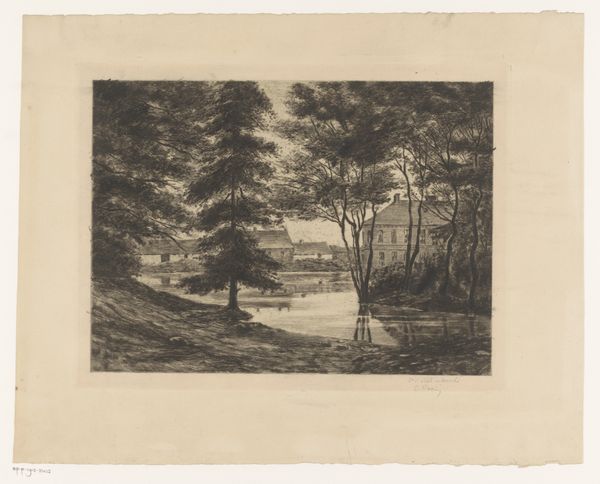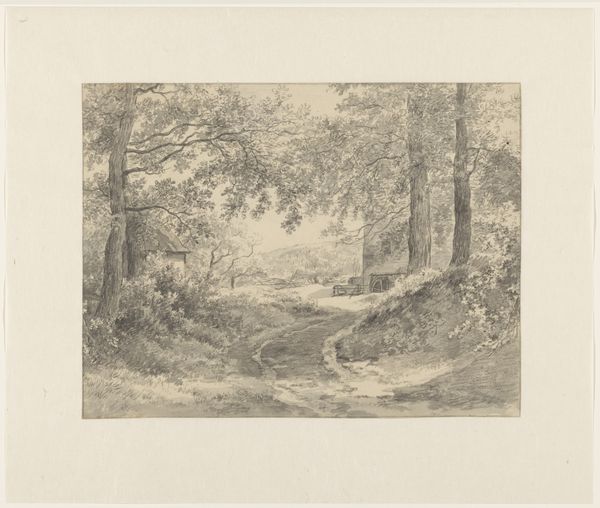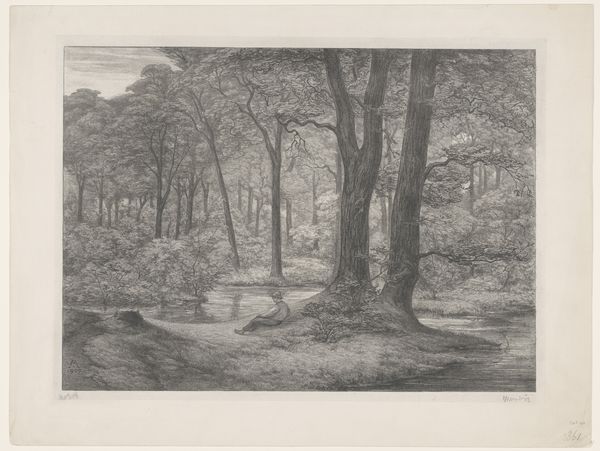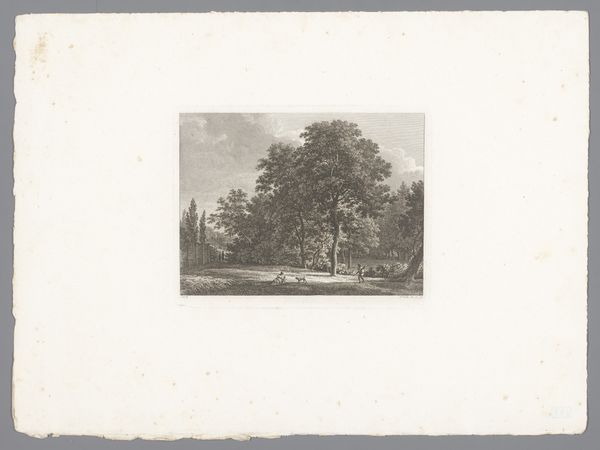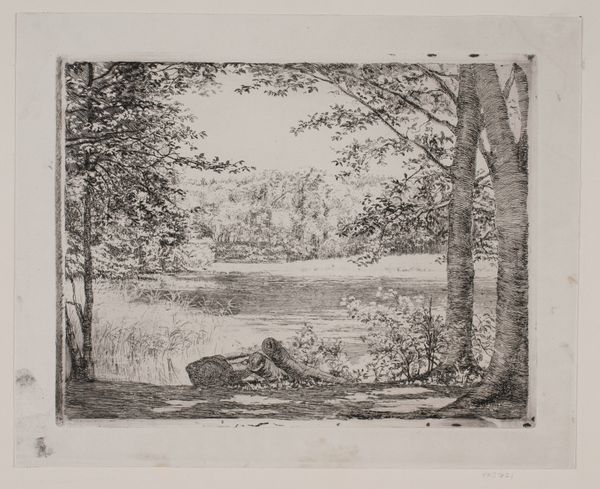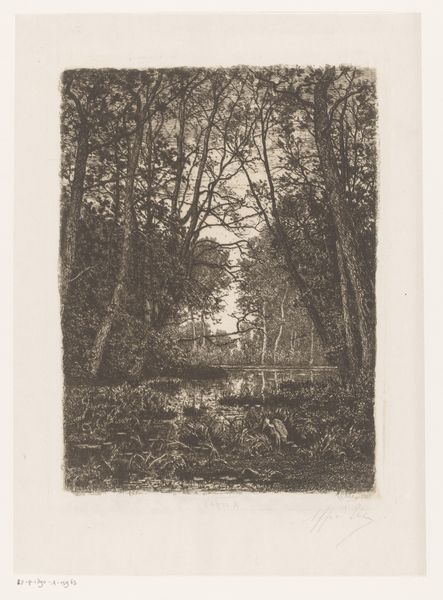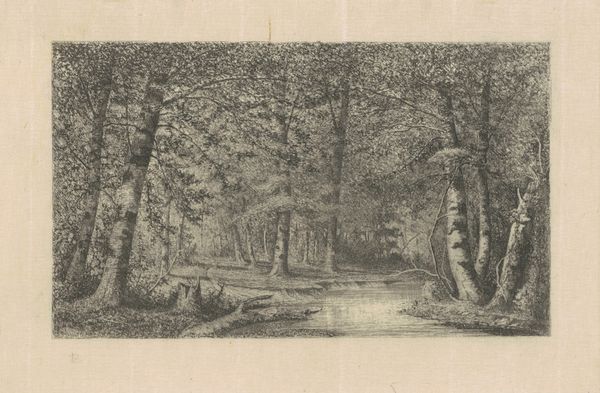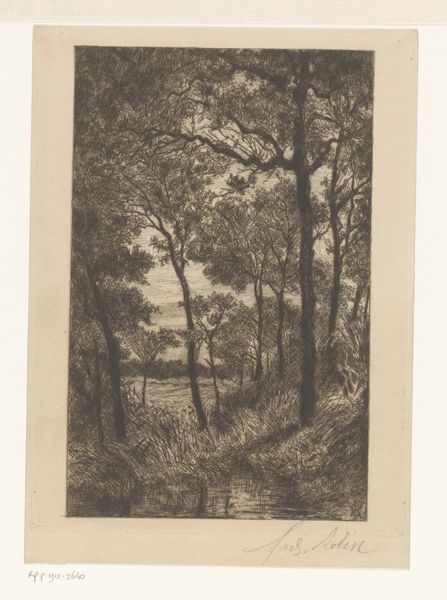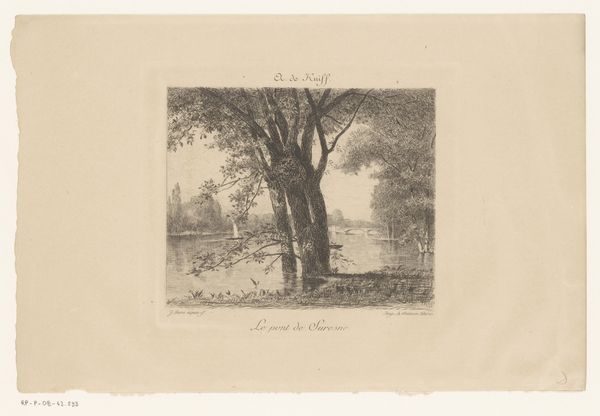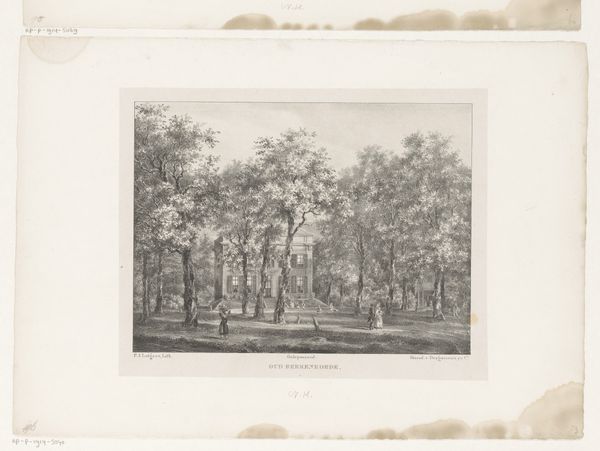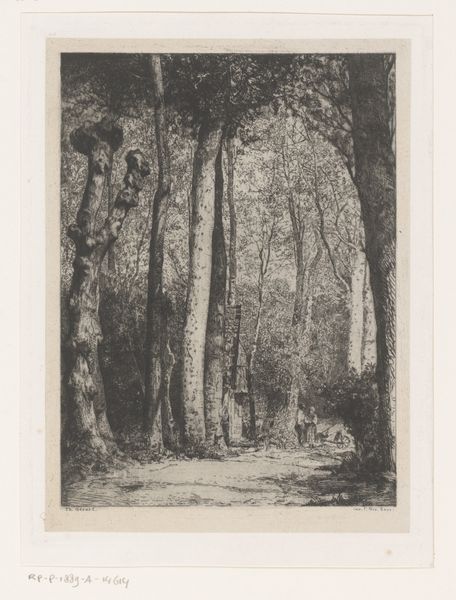
print, engraving
#
aged paper
#
natural tone
# print
#
old engraving style
#
landscape
#
forest
#
romanticism
#
engraving
Dimensions: height 231 mm, width 299 mm
Copyright: Rijks Museum: Open Domain
Curator: We’re looking at "Herderin in het bos van Rochecardon," an engraving from around 1800 by Jean-Michel Grobon. It resides here in the Rijksmuseum. What strikes you first? Editor: It’s intensely detailed, but the tone is almost melancholy. The darkness of the forest pressing in around a small, distant figure… you feel a bit of the sublime, the smallness of humanity against the overwhelming power of nature. Curator: Absolutely. It perfectly captures the Romantic movement's fascination with nature and its capacity to evoke emotion. Engravings like this were not merely representational; they participated in constructing ideas about landscape and national identity. Editor: The choice of engraving, too, speaks volumes. The labor involved in creating these fine lines, the plates themselves – it’s a painstaking, deliberate process, far removed from the rapid gestural marks of painting. Was this accessible art at the time? Curator: Printmaking served a vital purpose then. It allowed for the wider dissemination of images and ideas to an expanding audience. So, yes, more people could own and view artworks than ever before thanks to prints and engravings, thereby broadening social access. Editor: Yet, within that democratization, we see a particular vision glorified – the solitary shepherdess, harmoniously part of this idealized landscape. It begs the question of whose vision this actually serves, of how labor and landscape were being packaged for consumption by a specific elite. Curator: That's an important point. The image reinforces social hierarchies by depicting a rural idyll which downplays the harsh realities of labor. This resonates within the sociopolitical context of the late 18th and early 19th centuries. Editor: Right. The artistry is undeniable, but let’s consider the forest depicted itself. Where did it come from? How was its lumber sourced? It forces a look at resources being commodified within nature at the expense of the labor behind it. Curator: I see your point, and it's that awareness of production, labor, and consumption which enriches our viewing of the artwork. Editor: Indeed, acknowledging all these complexities encourages a more complete understanding of the image and its enduring power.
Comments
No comments
Be the first to comment and join the conversation on the ultimate creative platform.
